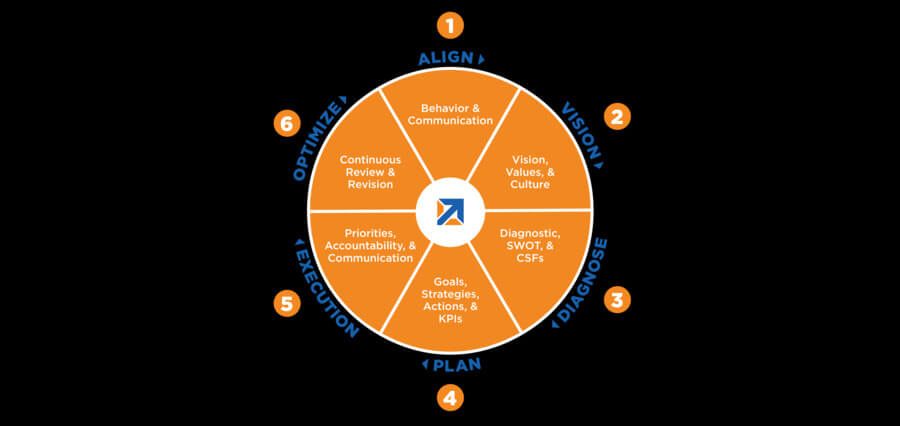In today’s dynamic and interconnected world, businesses are increasingly recognizing the importance of aligning their goals with a broader sense of purpose. A purpose-driven approach to leadership goes beyond profit-making and focuses on creating a meaningful impact for stakeholders, society, and the environment. This article explores the concept of leading with purpose and offers practical strategies for aligning business goals with a purpose-driven vision.
Define a Clear Purpose
Leading with purpose starts with defining a clear and inspiring mission that goes beyond financial success. This purpose should reflect the core values and aspirations of the organization and resonate with employees, customers, investors, and other stakeholders. A well-defined purpose provides a guiding compass that shapes decision-making and helps the organization stay committed to its broader impact goals.
Identify Stakeholder Needs
To align business goals with meaningful impact, leaders must identify the needs and expectations of various stakeholders. This includes understanding the concerns of employees, customers, communities, suppliers, and investors. By actively engaging with stakeholders and incorporating their perspectives, leaders can develop strategies that address societal and environmental challenges while delivering value to all involved parties.
Integrate Sustainability and Social Responsibility
Sustainability and social responsibility should be integral components of an organization’s purpose-driven approach. Leaders can embed sustainability principles into their operations, supply chains, and product development processes. By actively working to minimize environmental impact and promote responsible business practices, leaders can create a positive social and environmental legacy.
Establish Measurable Goals and Metrics
To ensure the effectiveness of purpose-driven strategies, leaders must set measurable goals and establish key performance indicators (KPIs). By quantifying the impact of their initiatives, leaders can monitor progress, make data-driven decisions, and communicate transparently with stakeholders about their efforts and achievements.
Cultivate a Purpose-Driven Culture
A purpose-driven culture begins with leadership setting a compelling example. Leaders should communicate the organization’s purpose consistently and inspire employees to embrace it in their daily work. Encourage employees to align their individual goals with the organization’s purpose, fostering a sense of shared responsibility for achieving meaningful impact.
Engage in Collaborative Partnerships
To maximize the organization’s impact, leaders can collaborate with like-minded partners, including NGOs, governments, and other businesses. These partnerships can leverage diverse expertise, resources, and networks to tackle complex social and environmental challenges more effectively. Collaborative efforts demonstrate a commitment to collective prosperity and inspire broader societal change.
Lead Ethically and Transparently
Ethical leadership is fundamental to a purpose-driven approach. Leaders must demonstrate integrity and transparency in their decision-making, taking into account the well-being of all stakeholders. Ethical leadership builds trust among employees, customers, and the public, fostering a positive reputation and enhancing the organization’s long-term sustainability.
Encourage Innovation and Creativity
Purpose-driven organizations encourage innovation and creativity as a means to achieve meaningful impact. Leaders can create a supportive environment that encourages employees to think creatively, experiment, and develop solutions that align with the organization’s purpose. Celebrate and recognize innovative efforts that contribute to the greater good.
Empower Employee Purpose
Leaders should empower their employees by connecting individual roles to the organization’s broader purpose. Help employees understand how their work contributes to the company’s mission and the positive impact it creates. Encourage open dialogue and provide opportunities for employees to reveal their ideas and experiences related to the organization’s purpose.
Embrace Diversity and Inclusion
A purpose-driven approach embraces diversity and inclusion as core values. Leaders should foster an inclusive work environment where diverse perspectives are valued and celebrated. By building diverse teams and promoting inclusive practices, leaders can drive innovation and better understand the needs of diverse stakeholder groups.
Responsible Supply Chain Management
Purpose-driven leaders extend their impact beyond the organization by ensuring responsible supply chain practices. Team up with suppliers who share similar values and adhere to sustainable and ethical principles. Assess and monitor suppliers’ environmental and social practices to ensure alignment with the organization’s purpose.
Social Impact Initiatives
Leading with purpose involves actively engaging in social impact initiatives. Leaders can support causes aligned with the organization’s purpose through philanthropy, volunteerism, or social impact programs. Engaging in meaningful community initiatives fosters a positive corporate reputation and strengthens ties with local communities.
Continuous Learning and Adaptation
Purpose-driven leadership requires a commitment to continuous learning and adaptation. Leaders must stay informed about evolving social and environmental challenges and be willing to adapt their strategies accordingly. Embrace feedback from stakeholders and be open to refining goals and approaches based on new insights.
Transparent Reporting and Communication
Transparency is essential in purpose-driven leadership. Communicate openly and honestly about the organization’s progress toward its impact goals, including both successes and challenges. Regularly publish sustainability reports and engage with stakeholders to foster trust and accountability.





